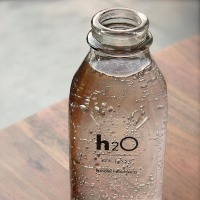-
What, when and how much to drink – training for a sprint or standard event
- Posted onjofrancis
- in Nutrition, Website Articles
- onApril 25, 2017
- No Comments.
What, when and how much to drink

In general, we need 2-3 litres of fluid a day to be well hydrated and this comes from both food and drink. When we exercise, we sweat – this is the way we regulate our body temperature. Taking on an exercise program will then increase our fluids needs as we need to replace the water lost through sweating in order to prevent dehydration. The more you sweat, the more you will need to drink to replace lost fluid.
How much?
When we sweat we lose body weight – during training you should drink at a rate that limits these body weight losses. But we are all very different and some people sweat much more than others. And how do you know how much you sweat? If you want to be precise then you can weigh yourself before and after an hour of normal training. The weight lost will be your sweat rate per hour where 1 kg lost in body weight represents 1000ml lost in sweat. Not all of us training for recreation and general fitness will want to be so precise and a good rule of thumb is that for exercise lasting over an hour an average athlete should drink 150 ml-250 ml every 15 mins. And of course – drink when you are thirsty!
When should I drink?
Always start a training session well hydrated by drinking 400 – 600 ml of water or sports drink over the 2 hours before the session.
As discussed above, during a training session you should aim to drink enough to limit the amount of fluid lost during sweat and 600 ml – 1000 ml per hour is a good guide. Bear in mind that we all sweat at different rates and that the amount of fluid required will also depend on the temperature, the athlete condition and the intensity of the exercise. Drinking small amounts more frequently is usually more comfortable to the stomach than drinking a large volume at once. And always drink when you are thirsty.
After exercise you need to replace the water and salts lost through sweat. If you are able to be precise then you should drink 1.2-1.5 litres of fluid for every kg of weight loss during your training.
What should I drink?
If your training session is at a low to moderate intensity and is less than one hour then water is fine. It is recommended that when training for longer than an hour or at higher intensities you include some carbohydrate together with your fluid intake. This will keep your glycogen stores topped up and will generally improve the quality of your training session. This is where sports drinks are useful and there are many commercial brands on the market.
Most commercial drinks are isotonic which means that they are a similar concentration to blood and quickly absorbed. Most isotonic sports drinks also contain sodium which stimulates sugar and water absorption and replaces sodium lost through sweating. Replacing sodium is especially important if you are exercising for longer than 2 hours.
Hypertonic drinks contain greater than 8 mg carbohydrate per 100 ml and are less quickly absorbed than isotonic drinks but are useful when energy requirements are high and sweat rates are lower as they usually do not contain salt.
After exercise you need to replace fluid and salt. If only liquids are available immediately after exercising then a sports drink containing sodium is a good choice. Plain water is great if solid foods containing salt are available.
A word about hyponatraemia
Hyponatraemia is the condition caused by low blood sodium levels that causes headaches, confusion, problems breathing, loss of coordination and can be fatal. It results from drinking too much plain water if sweating very heavily for a long period of time. You do have to drink extreme amounts of water to be in any danger but it is worth knowing that, as with most things in life, you can over do it! For most of us, preventing dehydration is our challenge – if in any doubt at all use a sports drink containing sodium.
If you enjoyed this article please consider sharing it!




